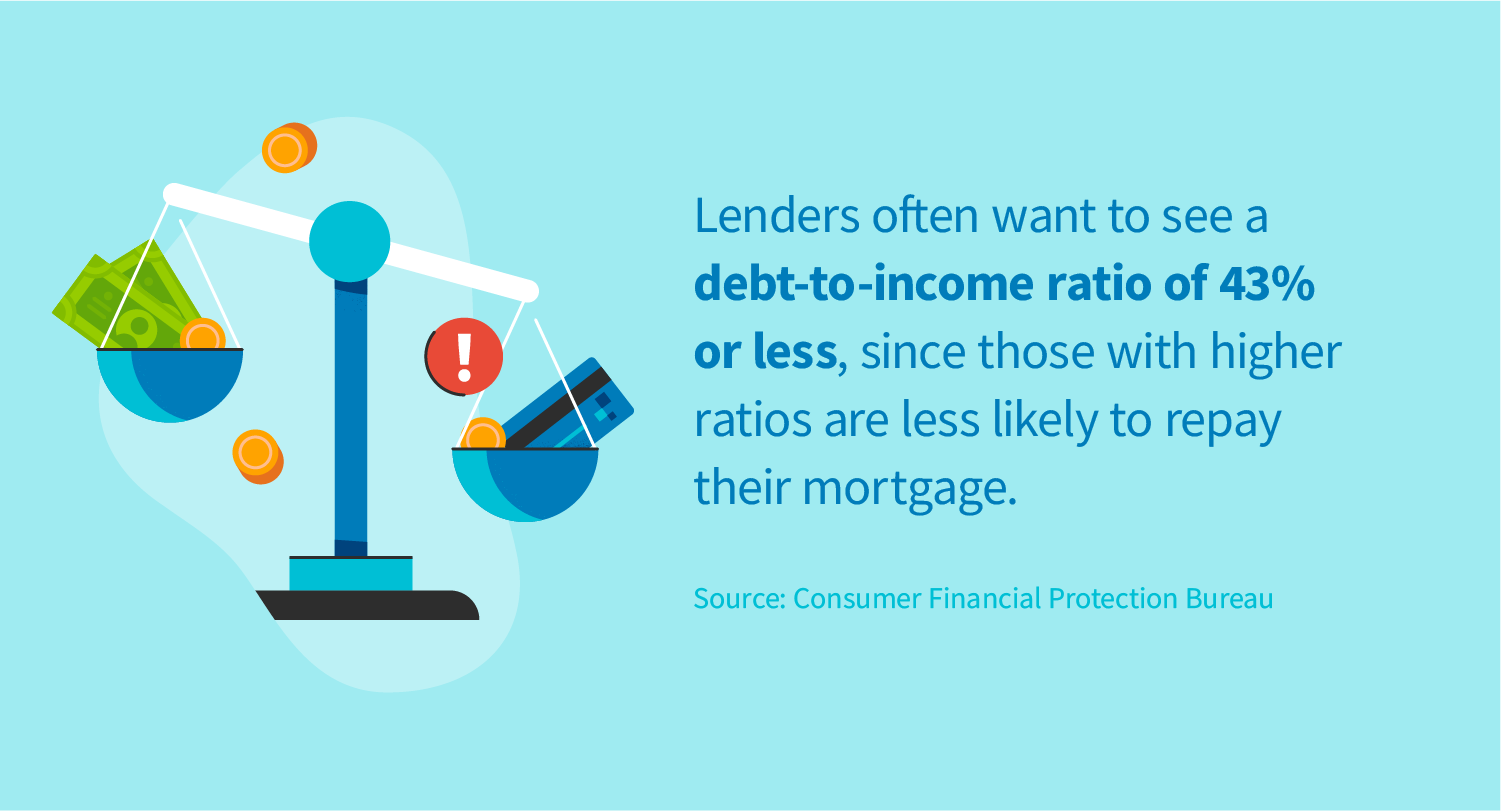
Disclosure regarding our editorial content standards.
The thought of buying a home elicits a lot of feelings—excitement, worry, confusion, stress, joy—and also a lot of questions. Going from renting to owning can be a huge source of satisfaction, but the process of buying a home often seems shrouded in mystery.
Before anything else, most people wonder about how to save for a down payment. How much do you need? Where should you keep the money? What’s a reasonable timeline?
Below, we’ll cover everything you need to know about finding the funds for a down payment.
Step 1: Determine how much you need to save
Setting a savings goal is an important part of getting your down payment together, so first you’ll need to know how much you need to save.
While it’s difficult to pin down an exact figure, you can come up with a reasonable goal by considering three questions.
How much home can you afford?
In general, you’ll be able to afford a home that costs two to three times your gross income. If your household earns $125,000 annually, you could expect to buy a home worth $250,000 to $375,000.
Take some time to look at houses in cities and neighborhoods that you have your eye on to see recent sales prices as well as pricing trends. The homes you’re looking at now may be more expensive by the time you have a down payment prepared, so you may want to adjust your calculation to include rising prices.
What percentage will your down payment be?
Your down payment may end up being anywhere from 3 percent to 20 percent or more of the total cost of your home, depending on your loan.
- Conventional loans: Loans from banks and other financial institutions may allow for down payments as low as 5 percent, though 10 percent to 20 percent is more common.
- Federal Housing Administration (FHA) loans: Loans from the FHA offer down payments as low as 3.5 percent.
- Other loans: Loans from Veterans Affairs (VA) and the United States Department of Agriculture (USDA) may offer loans with no down payment with other qualifications.
When considering how much to put down for your home purchase, consider the cost of private mortgage insurance (PMI). Most loans will require monthly PMI payments for down payments less than 20 percent of the home’s value. This insurance protects the lender in case you default on your loan.

A larger down payment will lead to a lower monthly payment and less interest paid overall, so you’ll want to try to save the most money you reasonably can.
What are your other home-buying costs?
While the down payment represents the largest initial sum you need to purchase a home, there are other costs to consider. When determining how much to save before buying a house, don’t neglect other important costs, including:
- Closing costs: Closing costs, which include the transactional costs associated with originating a loan and transferring ownership of the home, often amount to 2 percent to 5 percent of the home’s value.
- Repairs: Upon moving into a new home, you may have initial costs to repair expensive items like the air conditioner or roof.
- Furniture and appliances: If you’re moving into your first home, you may need to purchase appliances that were previously included in your apartment as well as furniture to fill a larger space.
Buying a home is an expensive process, and owning a home is costly as well. You’ll want to be sure that after purchasing your home, you still have an emergency fund that can support the mortgage, utility and repair costs associated with owning a home. Make sure that your savings goal includes a buffer for the months after you move into your house, which often prove to be pricey.
After answering all of the above questions, you’ll have a rough idea of how much you need to save to purchase a home. Next, you’ll need to look at your current income, expenses and savings to figure out how to reach your goal.
Step 2: Examine your budget
To save a large sum of money, you need to have a very clear picture of how much you’re earning and how much you’re spending. Whether or not you’re already using a budget, you’ll need to take some time to dig deep into your finances.
Look at your bank and credit card statements as well as any other financial accounts you have, then ask yourself the following questions:
Income
- How much do I earn each month?
- Is my income regular or irregular?
- Are the balances of my savings and checking accounts increasing over time?
- Do I have opportunities to earn more money?
Expenses
- What are my fixed expenses? (Housing, utilities, insurance, food, transportation, etc.)
- How much do I spend each month on nonessential purchases?
- In which areas am I willing to cut back my spending?
- Do I have any recurring costs or subscriptions that I don’t need or use?
Savings
- How much do I currently have saved?
- How much do I save each month?
- Do I contribute regularly to any retirement accounts? (E.g., a 401(k) or IRA)
- How much more would I save by cutting out nonessential expenses?
Debt
- What debts do I currently have?
- Do any of my debts have high interest rates? (Greater than 6 percent)
- Is my debt decreasing or continuing to grow?
- How long until I am debt-free?
In order to save for a down payment, you need to ensure that your spending stays below your income every month. To do that, you’ll need to look carefully at where you spend your money and how you’ve currently been saving.
Step 3: Find ways to spend less and save more
After taking a look at your existing spending, it’s now time to get down to business finding ways to put together the cash for your down payment.
There are two key things you need to do to increase your savings: earn more and spend less. Neither of these is necessarily easy, but there are ways to work on both as you try to save for a down payment.
Spend less
- Look for unused or unneeded subscriptions or memberships with monthly or annual fees.
- Try to reduce spending on eating out, entertainment and nonessential purchases.
- Consider getting a less expensive cell phone or cable television plan.
- Watch out for lifestyle creep, which occurs when increased income leads to increased spending.
- Postpone any vacations that can be deferred.
- Avoid credit card interest charges by paying your bill in full each month.
- Use automated savings through your bank to avoid impulse purchases and increase your savings rate.
Earn more
- Find opportunities for side hustles or part-time gigs, especially if they involve one of your passions.
- Consider asking for a raise if your performance has been bringing additional value to your employer.
- Seek out a new job or career if your current position has reached an income ceiling.
- Think about selling unused or unneeded items around your house.
- Direct any windfalls, like tax returns or inheritances, directly toward your savings goals.
In addition to all of the above, one of the best ways to increase the amount of money available to you each month is to pay off any existing debts. Monthly debt payments can eventually be redirected toward your down payment savings goal, so making a plan to get out of debt is an important step on your financial journey. Read more to learn how to deal with debt as you save for your house.
Step 4: Deal with debt
If you have any debt, you’ll need to figure out how to deal with it before deciding to save for a down payment. Nearly everyone has some kind of debt, like a car loan or student loans, and debt is not necessarily an obstacle to purchasing a home.
Still, understanding your current debt situation could help you make a solid savings plan and avoid headaches during the home-buying process.
Answer the following questions when considering how to proceed with saving for a down payment while dealing with debt.
What is the interest rate of your debt?
If you’re carrying high-interest debt, especially credit card debt, that could be an obstacle to saving for a down payment. In fact, saving for a down payment could be a financial liability in the long term, since you will end up spending even more on interest charges while you save.
Consider, for example, someone who has $5,000 in credit card debt with a 21 percent interest rate. If they make minimum payments on their credit card debt for a couple of years to save for a down payment, the debt will then have grown to more than $7,000.
If debt is currently ruling your financial life, it may be worth finding ways to get that under control before saving for a down payment.
What is your debt-to-income ratio?
When you apply for a loan to purchase a home, the lender will look closely at your credit score and debt-to-income ratio (DTI). Your DTI is a reflection of how much you owe relative to how much you earn. To calculate your DTI, add up all of your monthly debt payments and divide by your monthly income.

If your debt payments make up a significant percentage of your monthly income, you may be seen as a risk to lenders, who want to ensure that the loan will be paid back. In that case, you may need to spend time addressing some of your debt before you’re ready to apply for a mortgage.
What are your monthly debt payments?
Calculating the total value of your debt payments can be helpful in determining whether you’re ready to save for a down payment. Additionally, you’ll want to get a sense of how soon you’ll be debt-free.
Many budgets account for 50 percent to go toward fixed expenses, 30 percent to go toward discretionary spending and 20 percent to go toward savings. If your debt payments are interfering with your savings rate, that could be a sign that saving for a down payment needs to wait.
If you already have a plan to pay down your debt, you can still start planning to save for a down payment in the future. The amount of your current monthly debt payment could eventually be used to save for a down payment every month. The average American spends $1,233 each month on debt payments, which would amount to almost $30,000 saved over two years after the debt is paid off.
Step 5: Set a timeline and monitor your progress
Once you know how much you can save each month, it’s time to make a savings timeline. Many people set the goal to save up for a down payment in two to three years, but there’s no set deadline—everyone has different financial circumstances.
Take your savings goal and divide it by your monthly savings to come up with a rough estimate for how long you’ll need to save. For instance, you may want to save up $40,000 for a down payment by putting aside $1,500 each month. That will take you 26 months, or just over two years.

Finances aren’t entirely predictable, so your plan may need to adjust over time. Set aside time each month to review your income, spending and savings and adjust your plan as needed. Some of your other savings goals—like investing for retirement—may be interrupted during this time, but often the long-term investment of buying a home is worth prioritizing.
As you keep working toward saving for your down payment, keep the following questions in mind.
What happens if my savings goal changes?
There’s no problem with needing to make adjustments to your plan. You may experience changes in your goal, your income, your spending or your savings rate as you try to save for a down payment.
The important thing is that you keep your eyes on your goal and make necessary changes to your financial behaviors to reach it. If needed, take a look at the earlier steps again to reevaluate your situation. Could you look for a loan with a smaller down payment? Could you increase your income? Could you refinance any of your existing loans? Could you make cuts to your expenses?
Where should you store your down payment?
Most people choose to keep their down payment in a traditional or high-yield savings account. Since a down payment is a savings goal rather than an investment, you likely don’t want to put the money in an investment account where you run the risk of losing it.
Instead, a savings account offers the possibility for modest gains through interest while protecting your money with federal insurance.
Step 6: Keep an eye on your credit score
As you continue to work toward saving for a down payment, one other aspect of your finances that you should monitor is your credit. A down payment is an important component of purchasing a home, but your credit will play a major role in determining whether you are able to secure a mortgage and what kind of interest rates you are offered.
In order to improve your credit as you save, try to do the following:
- Pay your credit card and loans on time and in full every month. Lenders want to see that you’re responsible with your credit, which means first and foremost that you make payments every month.
- Try to work toward a favorable debt-to-income ratio. Take time to pay off high-interest debt or loans with high balances, as you’ll be more likely to get a mortgage with a lower debt load.
- Keep an eye on your credit report. Your credit report keeps track of your accounts, balances and payments—and it’s what lenders will use to judge you when you apply for a mortgage. Make sure you know what’s in there and that your report is accurate.
Your credit report will influence your loan application, but it may not be accurate. For that reason, it’s important to look closely to make sure that your report reflects your actual credit history. If you notice anything that seems incorrect, consider reaching out to a credit repair company, which can dispute inaccurate information on your behalf. This has the potential to improve your credit, making it easier to secure a mortgage.
Congratulations on making a goal to save for a down payment, which is the first step on the path to homeownership. With patience and financial savvy, you can come up with the funds you need to purchase a house.
Note: The information provided on CreditRepair.com does not, and is not intended to, act as legal, financial or credit advice; instead, it is for general informational purposes only.
Questions about credit repair?
Chat with an expert: 1-800-255-0263






